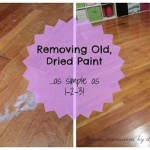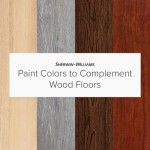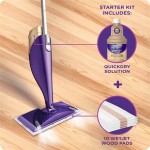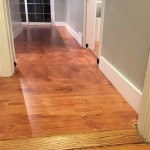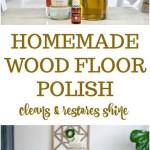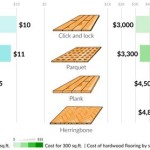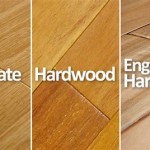```html
What Is The Best Wood For Flooring?
Selecting the right wood for flooring is a crucial decision that significantly impacts a home's aesthetics, durability, and overall value. The term "best" is subjective and depends heavily on individual needs, budget, lifestyle, and desired style. Various wood species offer unique characteristics in terms of hardness, grain patterns, color variations, and resistance to wear and tear. This article will explore the diverse options available, outlining their strengths and weaknesses to aid in making an informed flooring choice.
Wood flooring is generally classified into two main categories: solid hardwood and engineered hardwood. Solid hardwood consists of planks milled from a single piece of wood. Engineered hardwood comprises multiple layers of wood veneer glued together, with a top layer of solid hardwood providing the visible surface. Understanding the differences between these two types is fundamental when considering different wood species and their suitability for specific applications.
Hardwood Flooring – A Classic Choice
Solid hardwood flooring is a timeless classic, prized for its durability, beauty, and potential for refinishing. It can generally be sanded and refinished multiple times, extending its lifespan considerably. However, solid hardwood is susceptible to changes in humidity and temperature, which can cause it to expand, contract, and potentially warp or buckle if not properly installed and maintained. This sensitivity makes it less suitable for areas with high moisture levels, such as bathrooms and basements, unless specific precautions are taken.
Several popular wood species fall under the solid hardwood category:
- Oak: Oak is one of the most widely used hardwood flooring options due to its affordability, durability, and readily available supply. It is known for its prominent grain pattern and can be stained in a variety of colors. Red oak and white oak are two common varieties, with white oak being slightly harder and more water-resistant.
- Maple: Maple is a dense and hard wood known for its smooth grain and lighter color. It is a good choice for modern or minimalist interiors. However, maple can be more challenging to stain evenly, so it's important to choose a professional installer if staining is desired.
- Hickory: Hickory is one of the hardest domestic hardwoods, making it exceptionally durable and resistant to dents and scratches. It features a dramatic grain pattern and a range of color variations, adding character to any room.
- Walnut: Walnut is a luxurious hardwood prized for its rich, dark color and beautiful grain. It is relatively softer than oak or maple, so it may be more prone to dents and scratches. Walnut is a popular choice for creating a warm and elegant atmosphere.
- Cherry: Cherry is another hardwood with warm reddish-brown hues and a smooth, even grain. It darkens and becomes richer in color over time with exposure to light. Similar to walnut, cherry is relatively soft and requires careful maintenance.
Engineered Hardwood Flooring – Stability and Versatility
Engineered hardwood flooring offers a more stable alternative to solid hardwood, particularly in environments with fluctuating humidity levels. Its multi-layered construction makes it less prone to expansion and contraction, allowing it to be installed in a wider range of locations, including basements and over concrete slabs. The top layer, or wear layer, is made of solid hardwood, providing the same aesthetic appeal as solid hardwood flooring.
The thickness of the wear layer is a crucial factor to consider when choosing engineered hardwood. A thicker wear layer allows for future refinishing, extending the lifespan of the floor. Engineered hardwood is also available in a variety of finishes, styles, and wood species, providing numerous design options. Installation methods include gluing, nailing, stapling, or floating, depending on the subfloor and the product specifications.
Many of the same wood species used in solid hardwood flooring are also available in engineered versions, offering a wider range of choices for different environments. The core layers of engineered hardwood typically consist of plywood, fiberboard, or other wood composites, which provide dimensional stability.
Factors Influencing Wood Flooring Selection
Several key factors should guide the selection process for wood flooring:
- Hardness: The Janka hardness scale measures the resistance of wood to denting and wear. Woods with a higher Janka rating are more durable and better suited for high-traffic areas. However, hardness is not the only factor to consider, as other characteristics like grain pattern and color also play a role.
- Budget: The cost of wood flooring varies significantly depending on the species, grade, and installation method. Exotic hardwoods tend to be more expensive than domestic species. Engineered hardwood can sometimes be more affordable than solid hardwood, particularly for DIY installations.
- Lifestyle: Homes with pets or small children require flooring that is resistant to scratches, dents, and spills. Harder wood species like hickory or maple, or engineered hardwood with a durable finish, are good choices for active households.
- Aesthetics: The color, grain pattern, and finish of the wood flooring should complement the overall style of the home. Lighter woods can create a bright and airy feel, while darker woods can add warmth and sophistication. The desired level of formality or informality should also be considered.
- Maintenance: All wood flooring requires regular cleaning and maintenance to preserve its beauty and longevity. Solid hardwood may require refinishing every few years, depending on wear and tear. Engineered hardwood with a durable finish is generally easier to maintain.
- Installation: Professional installation is recommended for most wood flooring projects to ensure proper installation and avoid potential problems. However, some engineered hardwood products are designed for DIY installation. The cost of installation should be factored into the overall budget.
- Subfloor: The type of subfloor will influence the choice of wood flooring and the installation method. Solid hardwood typically requires a wooden subfloor, while engineered hardwood can be installed over concrete or other types of subfloors.
Beyond the species, the grade of the wood significantly impacts its appearance and price. Wood flooring grades commonly include "clear," "select," "common," and "rustic." Clear grade woods have minimal knots and imperfections, offering a uniform, clean look. Select grade woods have fewer knots and imperfections than common grade, providing a balance between quality and character. Common grade woods exhibit more knots, color variations, and imperfections, resulting in a more rustic appearance. Rustic grades may include significant knots, mineral streaks, and other natural features.
The finish applied to wood flooring also plays a crucial role in its appearance and durability. Common finishes include polyurethane, varnish, oil, and wax. Polyurethane finishes offer excellent protection against wear, scratches, and moisture. Oil finishes penetrate the wood, providing a natural look and feel. Wax finishes offer a more traditional look but require more frequent maintenance. The choice of finish depends on the desired aesthetic and the level of maintenance required.
Wood flooring alternatives, such as laminate and vinyl, mimic the appearance of wood while offering different properties. Laminate flooring is a synthetic product made from compressed wood fibers with a photographic layer that replicates the look of wood. Vinyl flooring is a resilient flooring option available in various styles, including wood-look planks. These alternatives are often more affordable and easier to maintain than wood flooring, but they lack the natural beauty and inherent value of real wood.
The environmental impact of wood flooring is also a consideration for some homeowners. Choosing wood flooring certified by the Forest Stewardship Council (FSC) ensures that the wood comes from responsibly managed forests. Reclaimed wood flooring is another environmentally friendly option, repurposing wood from old buildings and structures.
```
Best Hardwood Floors For High Traffic Areas Ub Hardwoods Blog

The Best Wood Flooring For Living Rooms Ted Todd Fine Floors

Best Wood Look Flooring Options America

The 5 Best Flooring Options For Your Custom Home Floorzz

Best Hardwood Flooring Preferences Designs

The 10 Best Hardwood Species For Wide Plank Flooring Vermont

Best Engineered Hardwood Floor For Scratch Resistance Lifecore Flooring S

What Is The Best Hardwood Flooring For Kitchens And Why Impressions Collection

What S The Best Type Of Hardwood Flooring America

Best Types Of Hardwood Flooring Durable Popular Options Homeadvisor
